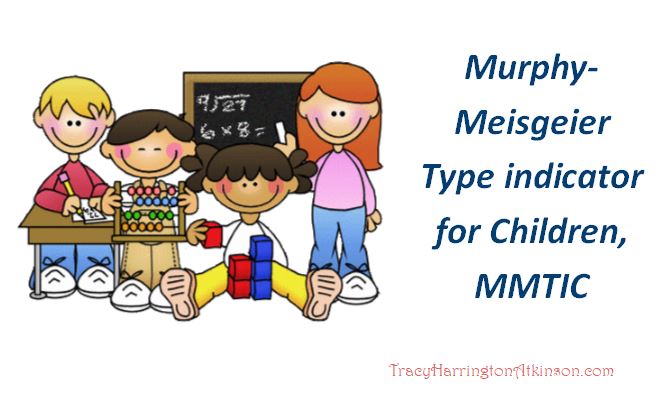 The Murphy-Meisgeier Type indicator for Children or MMTIC is based on the 60 years of research which is the underlying version of the Myers-Briggs Type Indicator. The MBTI, of course, is the world’s most used widely used personality type assessment. MMTIC, the children’s version has been used in schools for almost 25 years. The most recent studies have culminated in the most accurate version of this tool and it has demonstrated high levels of reliability and validity. It is accompanied by a vast array of support materials as well. The child can take the test online or they can take the test through pen and paper means. The reports are actually written directly to the students. There are three different levels of the assessments:
The Murphy-Meisgeier Type indicator for Children or MMTIC is based on the 60 years of research which is the underlying version of the Myers-Briggs Type Indicator. The MBTI, of course, is the world’s most used widely used personality type assessment. MMTIC, the children’s version has been used in schools for almost 25 years. The most recent studies have culminated in the most accurate version of this tool and it has demonstrated high levels of reliability and validity. It is accompanied by a vast array of support materials as well. The child can take the test online or they can take the test through pen and paper means. The reports are actually written directly to the students. There are three different levels of the assessments:
- the elementary, ages 7 to 11
- middle school, 11 to 14 years old
- high school, ages 14 to 18
- What does the Murphy-Meisgeier Type indicator for Children (MMTIC) do?
- What does it show?
- What are the results?
It’s going to show the same things that the Myers-Briggs Type Indicator does. The results will list how the child gains their energy. Are they an extrovert or an introvert? How is their information taken in? Sensing or intuition? Then, of course, how are their decisions made? Are they thinking or feeling? Lastly, how does the child relate to the outer world or bring things to a closure? Judging and perceiving.
The MMTIC offers a great opportunity for both parents and teachers to have a full appreciation of a child’s personality and preferences. It reduces some conflicts that a child might have with in relationships as well as really facilitating greater success at school and with friendships. This is a wonderful way to improve relationships between children, parents, teachers and administrators as well as anyone else with whom they wish to build relationships.
Why discover a personality type for a child?
Where is the Murphy-Meisgeier Type indicator for Children, MMTIC available?
Subscribe to our YouTube Channel by clicking here.
Tracy Atkinson, mother of six, lives in the Midwest with her husband and spirited long-haired miniature dachshunds. She is a teacher, having taught elementary school to higher education, holding degrees in elementary education and a master’s in higher education. Her passion is researching, studying and investigating the attributes related to self-directed learners and learning styles. She has published several titles, including MBTI Learning Styles: A Practical Approach, The Art of Learning Journals, Calais: The Annals of the Hidden, Lemosa: The Annals of the Hidden, Book Two, Rachel’s 8 and Securing Your Tent. She is currently working on a non-fiction text exploring the attributes of self-directed learners: The Five Characteristics of Self-directed Learners. Check out her courses on Udemy.



Comments are closed